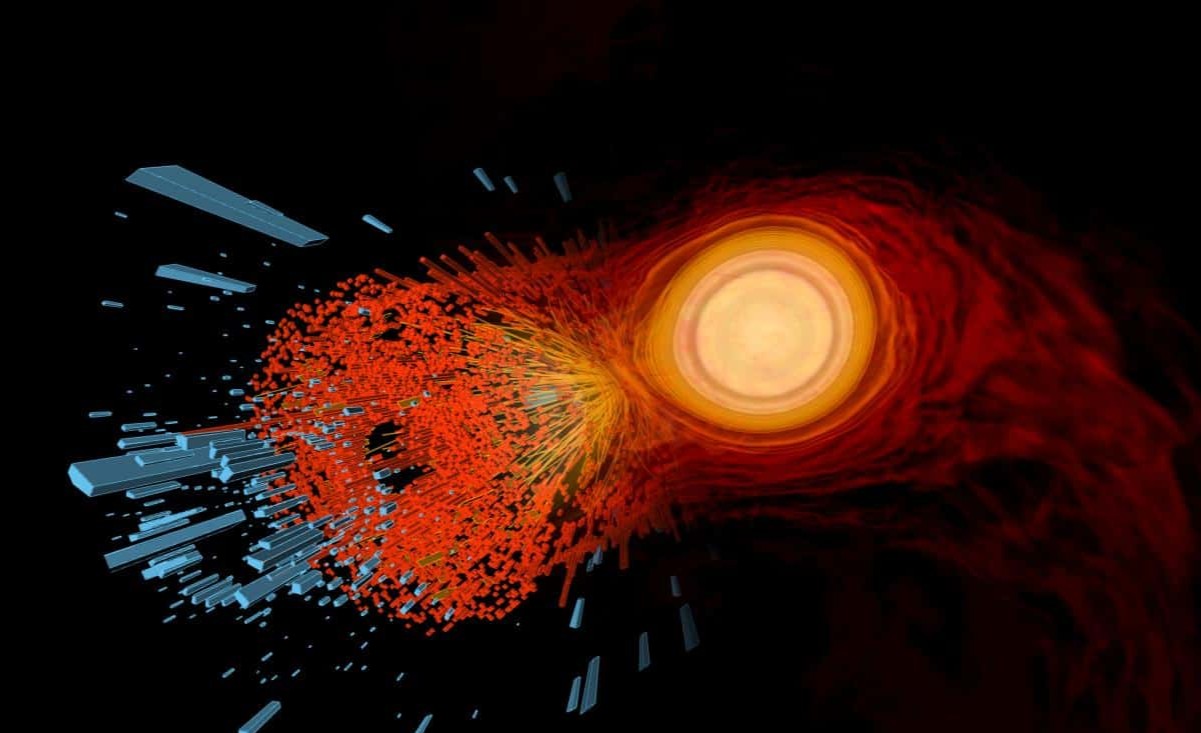
What is the Quark Epoch? The Quark Epoch is a period in the early universe's history, occurring just after the Big Bang, when the universe was incredibly hot and dense. During this time, the universe was filled with a hot, dense plasma of quarks and gluons. Quarks are the fundamental building blocks of matter, while gluons are the particles that mediate the strong force, binding quarks together. This epoch lasted from 10^-12 to 10^-6 seconds after the Big Bang. As the universe expanded and cooled, quarks combined to form protons and neutrons, leading to the formation of atomic nuclei. Understanding the Quark Epoch helps scientists learn about the fundamental forces and particles that make up our universe.
What is the Quark Epoch?
The Quark Epoch is a fascinating period in the early universe's history. It occurred just moments after the Big Bang, when the universe was incredibly hot and dense. During this time, quarks and gluons roamed freely before forming protons and neutrons. Let's dive into some intriguing facts about this epoch.
- The Quark Epoch began approximately 10^-12 seconds after the Big Bang.
- Temperatures during this period reached around 2 trillion Kelvin.
- Quarks are elementary particles and fundamental constituents of matter.
- Gluons are the force carriers that bind quarks together.
- The universe was in a plasma state, known as quark-gluon plasma.
- This epoch lasted until about 10^-6 seconds after the Big Bang.
- During the Quark Epoch, the universe expanded rapidly.
- The strong nuclear force played a crucial role in this period.
- Quarks come in six flavors: up, down, charm, strange, top, and bottom.
- The Quark Epoch ended when quarks combined to form hadrons.
The Role of Quarks and Gluons
Quarks and gluons were the primary players during the Quark Epoch. Their interactions shaped the universe's early structure and set the stage for the formation of matter as we know it.
- Quarks are never found in isolation; they always pair up or form triplets.
- Gluons mediate the strong force, which is much stronger than gravity or electromagnetism.
- The quark-gluon plasma was so dense that light couldn't travel through it.
- Quarks and gluons are part of the Standard Model of particle physics.
- The study of quark-gluon plasma helps scientists understand the early universe.
Transition to the Hadron Epoch
As the universe cooled, quarks began to combine, marking the end of the Quark Epoch and the beginning of the Hadron Epoch. This transition was crucial for the formation of protons and neutrons.
- The cooling allowed quarks to bind together, forming hadrons.
- Hadrons are particles made of quarks, such as protons and neutrons.
- The Hadron Epoch followed immediately after the Quark Epoch.
- This transition is known as hadronization.
- The universe's density decreased significantly during this period.
Modern Research and Discoveries
Scientists continue to study the Quark Epoch to gain insights into the universe's origins. Advanced technology and experiments at particle accelerators like the Large Hadron Collider (LHC) have provided valuable data.
- The LHC recreates conditions similar to the Quark Epoch by colliding heavy ions.
- Discoveries at the LHC have confirmed the existence of the quark-gluon plasma.
- Research on the Quark Epoch helps improve our understanding of fundamental forces.
- Theoretical models of the Quark Epoch are tested through high-energy physics experiments.
- Ongoing studies aim to uncover more details about the universe's first moments.
The Final Word on the Quark Epoch
The Quark Epoch is a fascinating period in the universe's history. It lasted from 10^-12 to 10^-6 seconds after the Big Bang. During this time, the universe was a hot, dense soup of quarks, gluons, and other fundamental particles. As the universe expanded and cooled, quarks combined to form protons and neutrons, setting the stage for the formation of atoms and eventually stars and galaxies.
Understanding this epoch helps scientists piece together the puzzle of how the universe evolved. It also provides insights into the fundamental forces and particles that govern everything around us. While we may never witness the Quark Epoch firsthand, studying it brings us closer to understanding the origins of our universe. So, the next time you look up at the stars, remember the tiny particles that made it all possible.
Was this page helpful?
Our commitment to delivering trustworthy and engaging content is at the heart of what we do. Each fact on our site is contributed by real users like you, bringing a wealth of diverse insights and information. To ensure the highest standards of accuracy and reliability, our dedicated editors meticulously review each submission. This process guarantees that the facts we share are not only fascinating but also credible. Trust in our commitment to quality and authenticity as you explore and learn with us.
